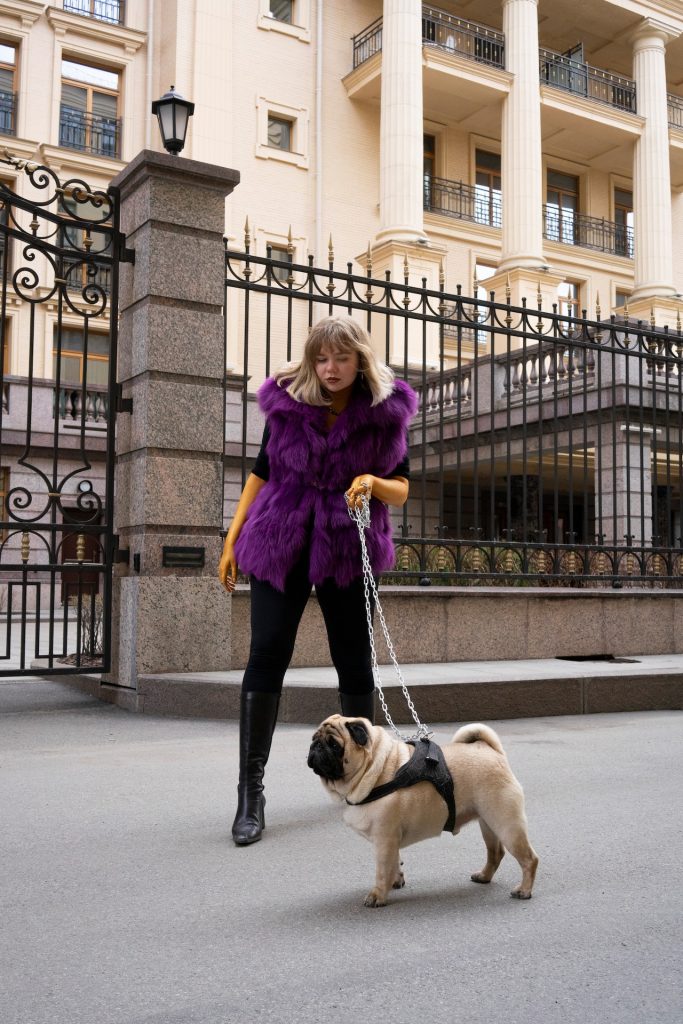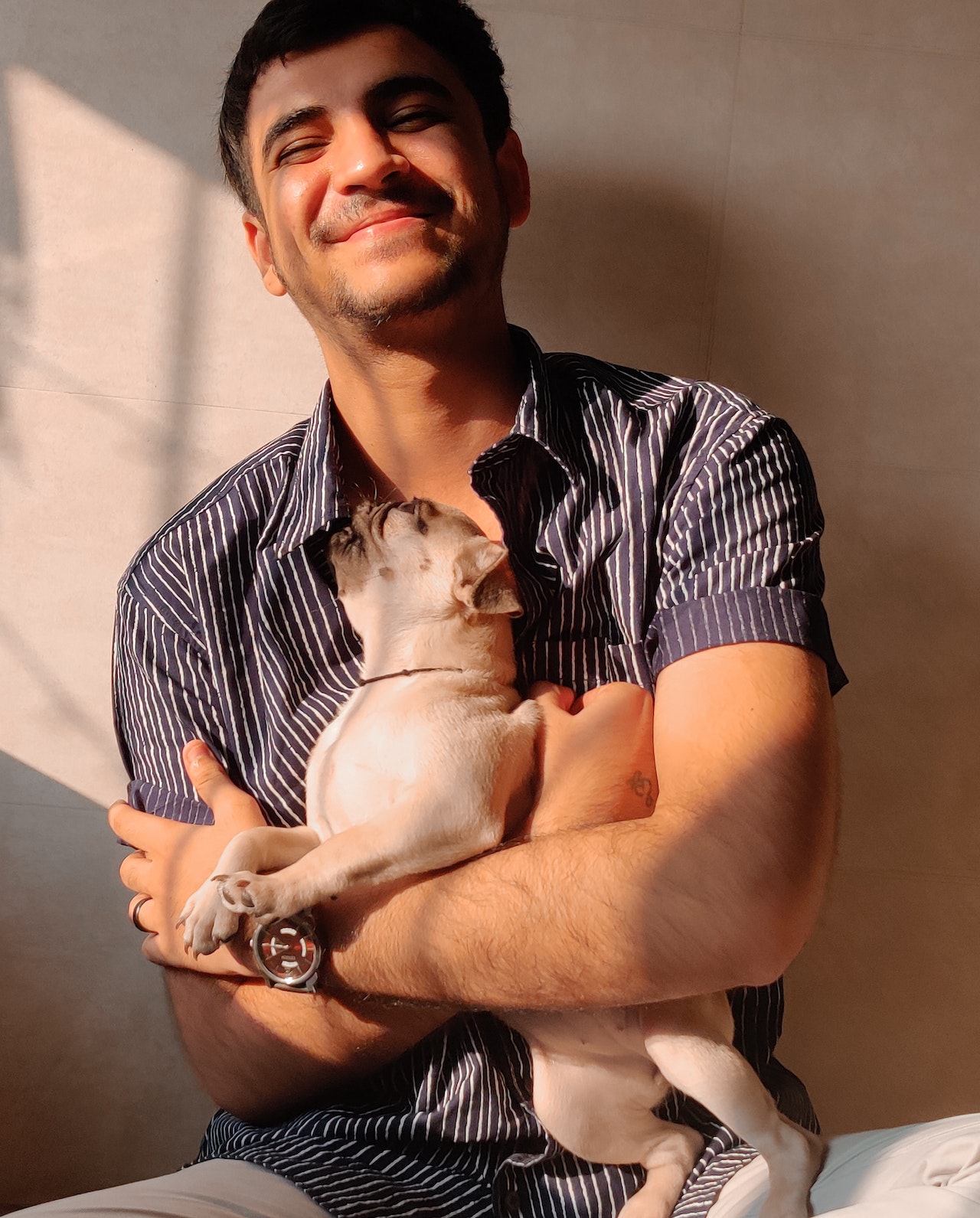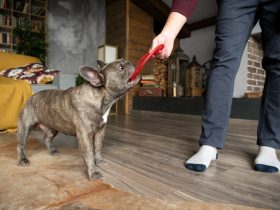Pug Puppies and Dogs
Fast Facts
Breed Group: Toy
Height: 10-12 inches
Weight: 14-18 lbs
Life Span: 12-15 years
Pug Information
Pug Basics
Where Are Pugs From?
Pugs were first domesticated in China over 2,000 years ago (reports of them date back to 400 B.C.), and the Dutch brought them to Europe almost 500 years ago.
How Many Types of Pugs Are There?
Apart from color variations, there is just one type of Pug.
Which Breeds Mix with Pugs?
Puggle (Pug + Beagle)
Chug (Chihuahua + Pug)
Pug Lifespan
Pugs live about 12-15 years.
Pug Size (Height & Weight)
Pugs are small, most weighing 14-18 lbs and standing around 10-11 inches tall.
Pug Appearance
What Colors Do Pugs Come In?
Fawn (the most prevalent hue), black, and apricot are the three major colors of pugs. In addition, there are the white pugs that have undergone genetic modification. Almost often, pugs wear a black mask.
How Much Do Pugs Shed?
Pugs have moderate shedding.
Do You Need to Groom a Pug?
Pugs have a very short, silky coat, which means they require very little care. The best care for this dog is regular washes and the occasional brushing.

Pug Temperament, Personality & Training
How Much Do Pugs Bark?
Pugs seldom bark naturally, and when they do, their bark more closely resembles a “yodel” or an animated “yip.” This makes this breed—which is often quiet—ideal for apartment life.
Are Pugs Good with Kids?
Pugs, despite their strong personalities, are often friendly, non-aggressive dogs, making them the ideal canine partner for a household with young children.
As with any breed, it is advised that your youngster always be under adult supervision when dealing with your Pug in order to keep everyone safe.
Are Pugs Good Family Dogs?
Pugs are noted for following their owners about the home and having eager-to-please temperaments (Busybody, or Best Pal? YOUR CHOICE!). They love human company, are energetic, strong playmates, but they also like hitting the snooze button a lot.
Are Pugs Good with Cats?
Pugs are widely recognized for their affection towards kids, but they also get along well with cats. Each dog has different tastes and temperaments, but you can be quite sure that your Pug and your cat should get along just well if they are properly socialized.
Are Pugs Easy to Train?
Pugs are not often the world’s simplest breed to train because of their independent, opinionated temperament, but each dog is different, of course! Pugs are quickly bored by monotonous activities, thus the training must be sufficiently stimulating (code for T-R-E-A-T-S!).
Pug Health
Do Pugs Have a Lot of Health Problems?
Those adorable tiny flat, wrinkled features and protruding eyes conceal a vulnerability to infections in the nasal creases of the skin and eye issues.
What Diseases are Pugs Prone To?
- Hip and/or Elbow Dysplasia: Two of the most prevalent skeletal disorders in dogs are hip and elbow dysplasia. Both conditions cause aberrant growth or malformed elbow or hip joints, and they are related disorders. The joints and sockets can’t properly connect because of the irregular form, so they rub and grind instead of moving easily. Contrary to hip dysplasia, which primarily causes joint instability, elbow dysplasia frequently causes bone and/or cartilage fragments to come free and irritate the joint tissues. Dysplasia-related rubbing can eventually lead to a number of problems, including discomfort, lameness, and secondary osteoarthritis. If discovered prior to the beginning of arthritis, surgery can be performed to repair the joint. If you are rescuing a pug, have him examined by a veterinarian to see whether he has dysplasia or is susceptible to developing it. This can help you determine what kinds of activities and exercise he can endure.
- Pug Dog Encephalitis (PDE): PDE is a fatal brain condition that only affects pugs. There is no known therapy or cure for this illness, which is poorly understood. In essence, it is a brain inflammation in dogs. Seizures, pacing in circles, lack of muscular coordination, lethargy, head pressure, anger or violence, blindness, and ultimately death, may all be symptoms of inflammation. Only after the dog has passed away may PDE be conclusively identified by examination of the canine’s brain tissue.
- Legg-Calve-Perthes: This illness results in the femur’s head, which is found in the dog’s rear limb, degenerating on its own. This will eventually cause arthritis and hip joint degradation. Legg-Calve-Perthes causes a Dachshund to become lame, walk with a limp, and experience pain while moving the hip joint. The disease is most effectively treated by surgery.
- Stenotic Nares: Stenotic nares, also known as constricted or pinched nostrils, are prevalent in brachycephalic breeds of dogs, like the pug, which have exceptionally short snouts. Stenotic nares are congenital defects of the nose’s cartilage that are present from birth. Breathing in might become more challenging over time if your nostrils are squeezed. The larynx will be strained and may finally collapse, which will make breathing difficult and frequently result in death. A frothy discharge from your dog’s nose when it breathes, loud breathing, blue gums, or fainting are all signs of stenotic nares. Surgery is an option for treating stenotic nares.
- Entropion: One or both eyelids may be inverted or may roll inward and brush against the surface of the eye due to this genetic abnormality. Foreign items like eyelashes or hairs might scrape the eye due to the abnormally shaped eyelid. Eye watering and squinting are examples of symptoms. If neglected, it may result in reduced vision or eventual blindness. Surgery can be used to turn the eyelid back to its natural position and treat the afflicted eyelid.
- Others: As a result of poor water drainage in their ears, floppy-eared breeds are more prone to skin infections, ear infections, epilepsy, patellar luxation (slipped kneecap), cataracts, dry eyes, nerve degeneration (slowly weakening of the hind legs without pain), sensitivity to heat, and anesthesia. A veterinarian could advise having the dog undergo hip, elbow, and eye examsto detect some of these problems. Many of these problems may be avoided with the right diet and exercise.

Purchasing vs Adopting a Pug
How Much Does a Pug Cost?
Pug adoption is far less expensive than purchasing one from a breeder. To cover the costs of caring for the dog prior to adoption, a Pug adoption costs about $300. Contrarily, purchasing a Pug from a breeder may be expensive. They can cost anywhere from $500 and $2,000, depending on whether or not they are descended from show-dog bloodlines.
Where Can I Adopt a Pug
A Pug rescue organization would be the most straightforward approach to adopt a Pug.
Pug Shelters and Rescues
There are organizations that specialize in finding wonderful homes for young Pugs, such as animal shelters and rescues.
Where Can I Find a Pug Breeder?
Before you purchase a puppy from a breeder, we advise you to rescue a Pug (or any other dog). In need of homes are the millions of purebred dogs who are homeless around the nation. Adopting a pug may significantly alter both the adopter’s and the dog’s lives.
It is safer to get a puppy from a reputed breeder if you’re still unsure and want to buy a Pug from a breeder. When working with a breeder, be sure that the breeder you’re buying from genetically tests their animals. You should also double-check the puppy’s health records. Make sure the breeder will return any animals they sell if they are unable to keep them in their home for whatever reason, and confirm that they are dedicated to finding those animals new homes if necessary.







